Skip Level Meeting
This guide will walk you through the essential elements of use skip level meeting to keep your attendees aligned and engaged.
Try Lark for Free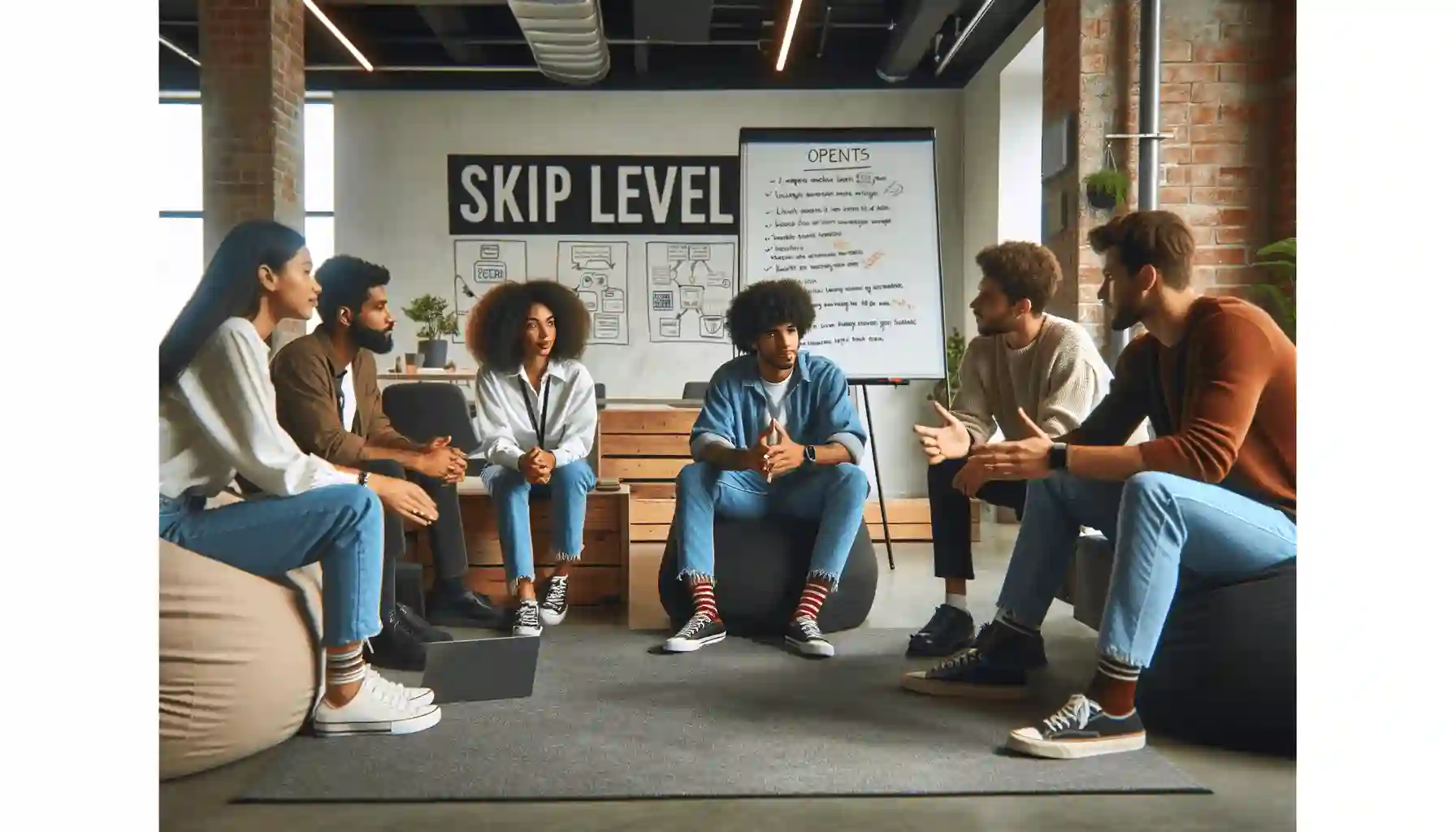
Skip-level meetings are a unique and valuable aspect of organizational communication. These meetings provide an opportunity for leaders to connect with employees who are not directly under their supervision. When conducted effectively, skip-level meetings can improve transparency, boost employee morale, and enhance overall organizational culture. In this guide, we'll delve into the key elements of conducting a successful skip-level meeting.
Use Lark Meetings to turn meetings into true collaborative experiences.
What is a skip-level meeting?
Understanding Skip-Level Meetings
A skip-level meeting is a scheduled one-on-one or group meeting between a higher-level leader (such as a manager, director, or executive) and employees who are not within their immediate reporting structure. These meetings allow leaders to gain insights into the experiences, concerns, and perspectives of employees at different levels of the organization.
Goals of a skip-level meeting
Fostering Open Communication and Engagement
The primary goals of a skip-level meeting include:
- Communication: Providing a platform for open and candid communication between leaders and employees.
- Engagement: Promoting a sense of inclusion, trust, and belonging among all employees.
Who should attend a skip-level meeting?
Key Participants
For a successful skip-level meeting, consider involving:
- Higher-Level Leader: The leader conducting the skip-level meeting.
- Employees: Employees who do not directly report to the higher-level leader but are willing to participate.
- Facilitator (Optional): In some cases, a facilitator may assist in organizing and conducting the meeting.
Related:
Unlock the Power of Webinars: A Comprehensive Guide to Boost Your Business | Lark Blog | Lark BlogLearn more about Lark x Meetings
Topics, agenda, and structure of a skip-level meeting
Structuring the Meeting
A well-structured skip-level meeting typically includes the following key components:
- Introduction and Icebreaker: Begin with introductions and a friendly icebreaker to create a comfortable atmosphere.
- Discussion Topics: Address specific discussion topics or questions related to the employee's experiences and concerns.
- Open Dialogue: Encourage open and honest dialogue, allowing employees to share their thoughts and ask questions.
- Feedback and Action Items: Collect feedback from employees and discuss any potential action items or follow-up steps.
- Appreciation and Closing: Express appreciation for participation and provide closing remarks.
How to conduct a skip-level meeting?
Step-by-Step Guide
Conducting a productive skip-level meeting involves careful planning and execution. Follow these steps for a successful session:
- Preparation: Plan the meeting agenda and prepare relevant discussion topics.
- Invitations: Invite employees to participate, clearly explaining the purpose and confidentiality of the meeting.
- Creating a Safe Space: Create a non-judgmental and safe space for employees to share their thoughts openly.
- Active Listening: Listen actively, ask open-ended questions, and avoid interrupting.
- Confidentiality: Assure employees that their feedback will be kept confidential to encourage honesty.
- Feedback and Follow-Up: Gather feedback, and if necessary, follow up with action items or responses to employee concerns.
- Documentation: Document key takeaways and any agreed-upon action items.
Learn more about Lark x Meetings
How often does a skip-level meeting occur?
Meeting Frequency
The frequency of skip-level meetings can vary based on organizational needs and resources. Some organizations conduct skip-level meetings:
- Quarterly: To ensure regular communication and engagement.
- Annually: As part of a broader organizational engagement strategy.
- Ad-Hoc: In response to specific needs or concerns.
Key differences between skip-level meetings and similar meetings
Understanding Distinctions
Skip-level meetings have unique characteristics that distinguish them from other types of gatherings:
- Focus on Employee Perspective: Skip-level meetings prioritize gathering insights and perspectives from employees.
- Cross-Hierarchical: These meetings bridge hierarchical levels and encourage direct leader-employee interactions.
- Enhanced Engagement: They foster a sense of inclusion and engagement among employees.
Related:
Unlock the Power of Webinars: A Comprehensive Guide to Boost Your Business | Lark Blog | Lark BlogLearn more about Lark x Meetings
Common pitfalls of skip-level meetings
Avoiding Mistakes
To ensure the success of skip-level meetings, avoid these common pitfalls:
- Lack of Preparation: Failure to plan discussion topics and questions can lead to unproductive meetings.
- Overlooking Follow-Up: Not following up on action items or employee concerns can erode trust.
- Lack of Confidentiality: Breaching employee confidentiality can deter honest communication.
Factors for a successful virtual skip-level meeting
Navigating Virtual Engagement
In an era of remote work, virtual skip-level meetings have become common. Consider these factors for hosting successful virtual skip-level meetings:
- Technology: Use reliable video conferencing and collaboration tools to facilitate online meetings.
- Scheduling: Accommodate different time zones and work schedules when scheduling virtual meetings.
- Engagement Tools: Implement interactive features like polls and chat to keep participants engaged.
Learn more about Lark x Meetings
Typical takeaways from a skip-level meeting
Measuring Success
Successful skip-level meetings result in tangible takeaways:
- Employee Insights: Leaders gain valuable insights into employee perspectives and concerns.
- Trust and Engagement: Employees feel heard and valued, enhancing their trust and engagement.
- Action Items: Potential action items or initiatives may arise from employee feedback.
Questions to ask in a skip-level meeting
Fostering Meaningful Discussions
To foster meaningful discussions during a skip-level meeting, consider asking these questions:
- **What aspects of your work do you find most fulfilling, and why?
- **Are there any challenges or obstacles that hinder your job satisfaction or productivity?
- **Do you have suggestions for improving the workplace or team dynamics?
- **How can leadership better support you and your colleagues?
**Is there anything else you would like to share or discuss?
Learn more about Lark x Meetings
Tools to enhance skip-level meetings
Leveraging Collaborative Tools
Consider incorporating collaborative tools to enhance skip-level meetings:
- Virtual Meeting Platforms: Use reliable video conferencing platforms for virtual meetings.
- Survey Tools: Administer anonymous surveys to gather employee feedback.
- Communication Channels: Utilize secure communication channels for feedback submission.
Examples
Real-world scenarios
Real-world scenarios
Let's explore three real-world scenarios of successful skip-level meetings in various contexts:
Scenario 1: Technology Company Skip-Level Meeting
Brief Content: In a skip-level meeting at a technology company, an executive met with software engineers who were not in their direct reporting chain. The meeting allowed engineers to discuss challenges, share ideas, and express their commitment to innovation. The meeting resulted in improved cross-team collaboration.
Detailed Content: The executive began by introducing themselves and sharing their genuine interest in hearing from the engineers. The discussion covered technical challenges, innovative ideas, and suggestions for process improvements. The executive committed to addressing specific challenges and fostering innovation across teams. Follow-up actions included forming cross-team task forces and providing resources for innovative projects.
Scenario 2: Healthcare Organization Skip-Level Meeting
Brief Content: In a healthcare organization, a hospital administrator held skip-level meetings with nurses from different departments. The meetings focused on patient care, staffing, and communication. The sessions led to better nurse-administrator collaboration and enhancements in patient care.
Detailed Content: The administrator initiated the meeting by expressing their appreciation for the dedication of the nursing staff. Nurses shared insights into patient care challenges, staffing issues, and communication gaps. Action items included revising staffing protocols, enhancing communication channels, and recognizing outstanding nurses. Subsequent meetings saw improvements in nurse morale and patient outcomes.
Scenario 3: Retail Corporation Skip-Level Meeting
Brief Content: At a retail corporation, a senior manager conducted skip-level meetings with store associates to understand their experiences and gather feedback on store operations. The meetings resulted in increased employee engagement and operational improvements.
Detailed Content: The senior manager initiated each meeting by acknowledging the essential role of store associates in the company's success. Associates shared their perspectives on customer interactions, inventory management, and workplace safety. Action items included providing additional training resources, implementing safety measures, and recognizing outstanding associates. The meetings led to enhanced employee engagement and customer satisfaction.
Learn more about Lark x Meetings
Tips for do's and don'ts
Best Practices and Pitfalls to Avoid
Follow these do's and don'ts to ensure productive and effective skip-level meetings:
| Do's | Don'ts |
|---|---|
| Create a welcoming and non-judgmental atmosphere. | Don't make promises that cannot be kept. |
| Encourage open and honest communication. | Avoid probing too deeply into personal matters. |
| Collect feedback and follow up on action items. | Don't breach employee confidentiality. |
Faqs for skip level meetings
1. What is the purpose of a skip level meeting?
- A skip level meeting serves the purpose of allowing senior leaders to engage directly with employees who are not their direct reports, fostering open communication and gaining insights into the organization's culture and challenges.
2. How often should skip level meetings be held?
- The frequency of skip level meetings can vary, but they are typically held periodically, such as quarterly or semi-annually, to maintain a connection between leaders and employees.
3. Who usually participates in skip level meetings?
- Skip level meetings involve senior leaders or executives and employees from various levels of the organization who are selected to participate based on specific criteria or randomly.
4. What topics are commonly discussed in skip level meetings?
- Skip level meetings often cover topics like employee feedback, concerns, career aspirations, and insights into team dynamics and organizational culture.
5. How can skip level meetings benefit organizational culture and leadership visibility?
- Skip level meetings provide an opportunity for leaders to better understand the concerns and perspectives of employees, which can contribute to improved organizational culture and enhance leadership visibility.
6. What is the role of HR in facilitating skip level meetings?
- HR departments often play a crucial role in coordinating and facilitating skip level meetings, ensuring that they are conducted effectively and that feedback is appropriately addressed.
7. Can skip level meetings be conducted virtually?
- Yes, skip level meetings can be conducted virtually using video conferencing or collaboration tools, making it easier for leaders to engage with employees across different locations.
Learn more about Lark x Meetings
Conclusion
Skip level meetings are a powerful tool for organizations to bridge the gap between leadership and employees at various levels. By facilitating direct communication and providing a platform for employees to share their perspectives, skip level meetings contribute to a more transparent and inclusive organizational culture. These meetings allow leaders to gain valuable insights, strengthen their connection with the workforce, and foster an environment of trust and collaboration.
Use Lark Meetings to turn meetings into true collaborative experiences.
A Game Changer for Skip Level Meeting: Empower your team with Lark Meetings
In the fast-paced and dynamic world of modern business, effective communication and collaboration are crucial for success of Skip Level Meeting. Here we introduce Lark Meetings to serve as a centralized hub for all communication needs.
Transform your meetings into collaborative endeavors
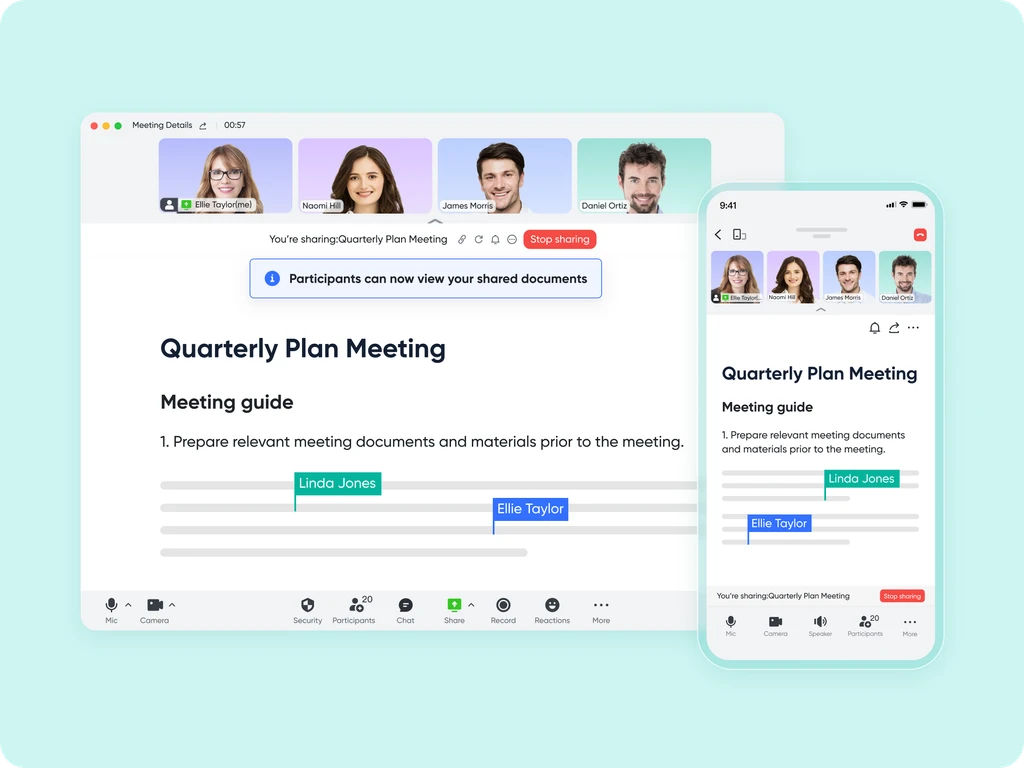
Leverage the potency of in-call document sharing, intelligent meeting minutes, and mobile-optimized features to enhance productivity collaboratively, irrespective of your location or schedule.
Seamlessly collaborate in real-time, across any device
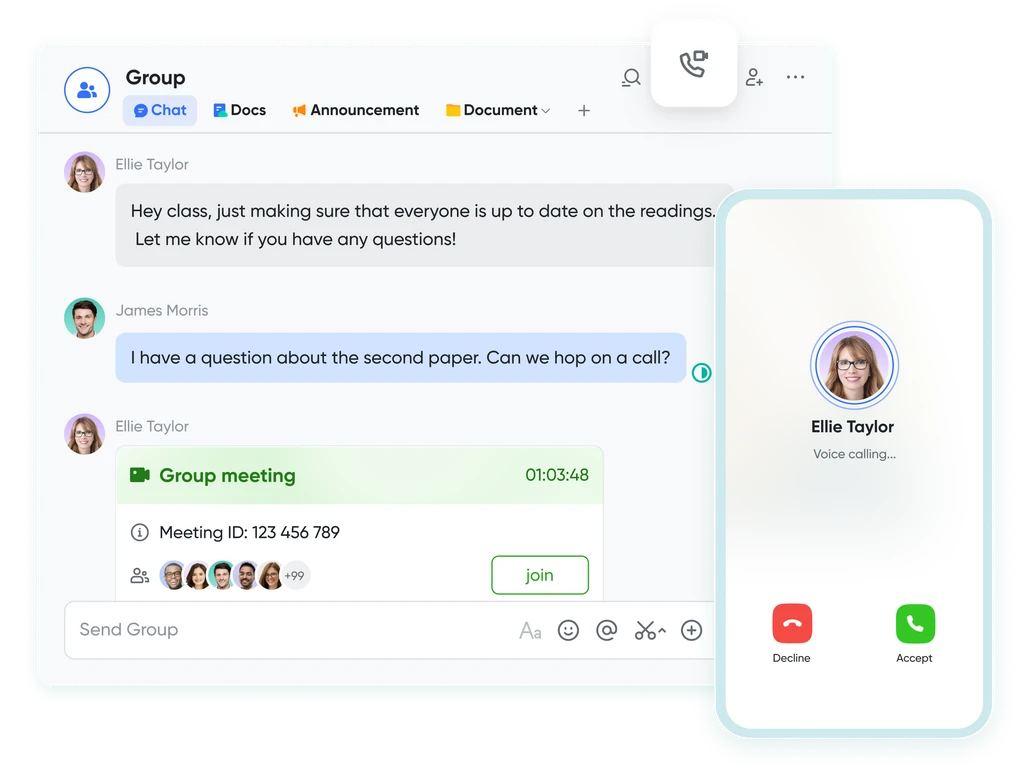
Share live documents instead of just screen views. Participants can navigate and edit simultaneously within the video call window, even while on the move.
Shift your focus to engagement, not note-taking
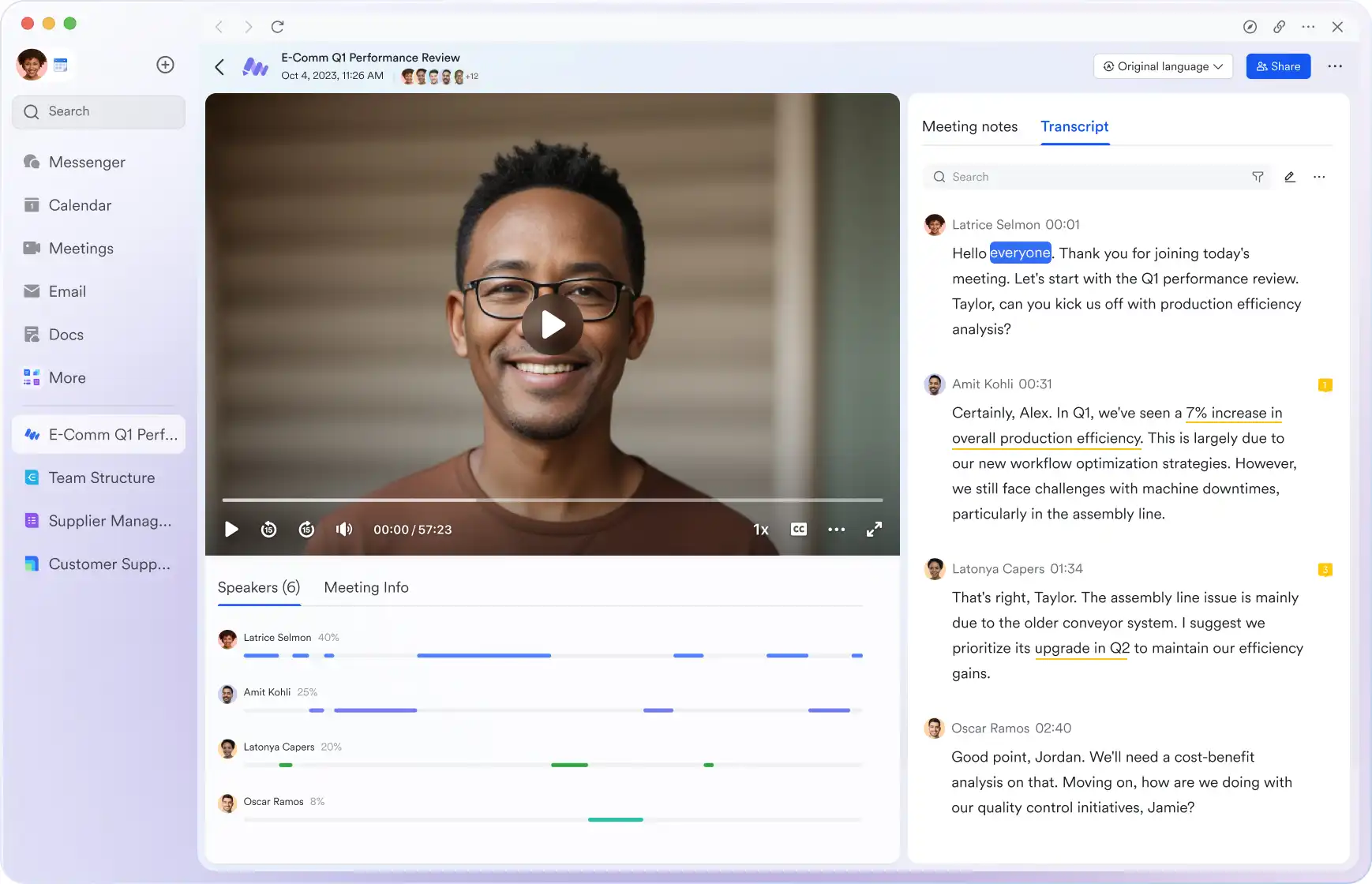
Lark Minutes automatically converts video meetings into transcripts, facilitating easy viewing, searching, and collaborative editing. Stay in the loop asynchronously, even if you can't attend the live meeting. Lark Minutes for meeting minutes support translation into 10+ different languages.
Break language barriers in communication
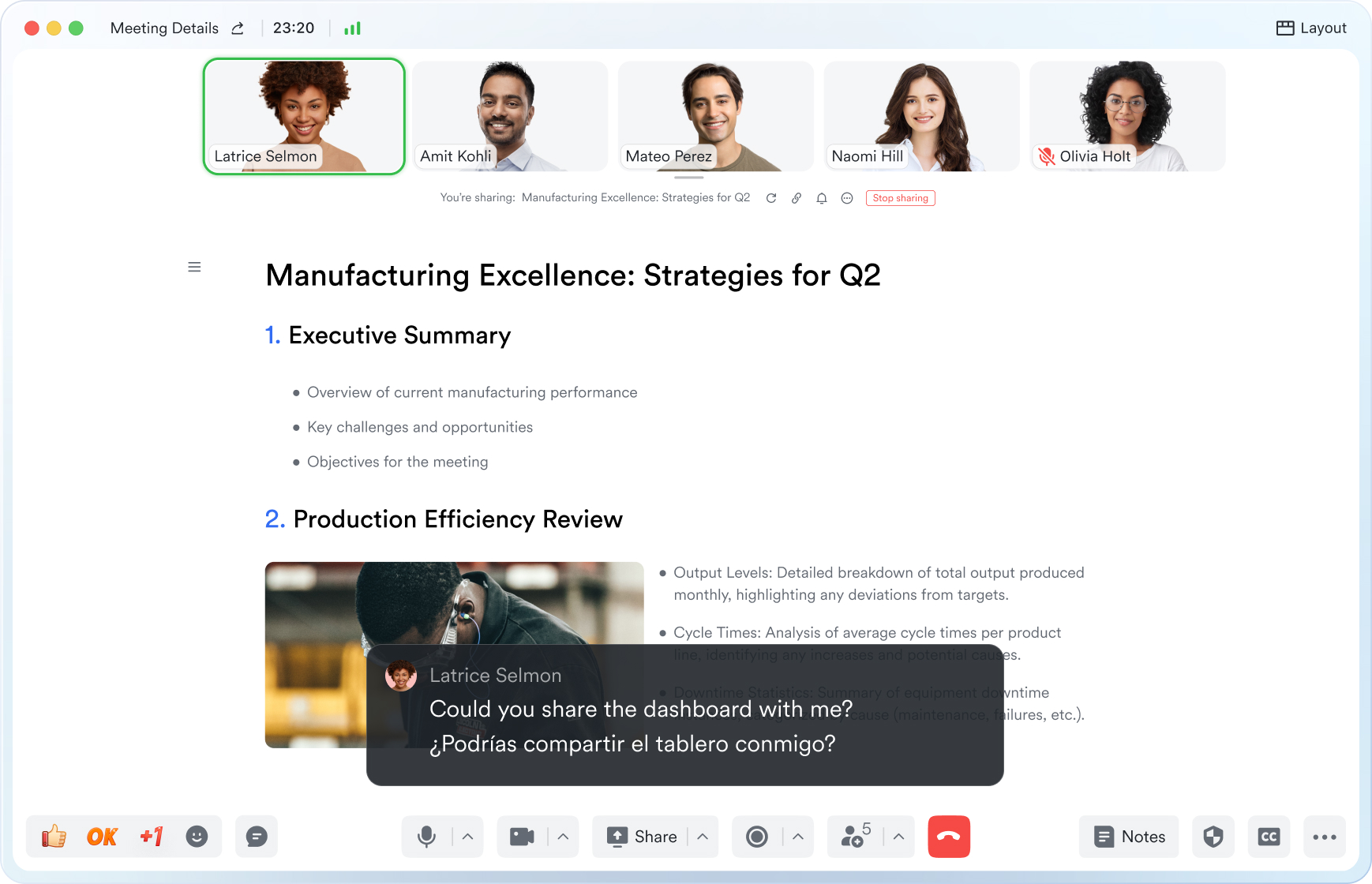
Lark Meetings provide real-time translation for subtitles, allowing individuals from diverse backgrounds to express themselves in their native languages. Ensure every voice is heard, regardless of geographical location. Live subtitles currently support translations from English, Chinese, and Japanese to 10+ different languages. See more translation feature in Lark.
Connect with larger audiences
Host dynamic online meetings and events accommodating up to 1,000 participants, with the flexibility of up to 50 breakout sessions for intimate group discussions within the larger meeting context. Try more Lark features for free.








